
2003 Triumph Thunderbird Sport
2003 Triumph Thunderbird Sport
Modern Day Vintage
When Triumph reentered the motorcycle market over a decade ago there was little question they were targeting the wallets of those with a sense of nostalgia for the legendary marque.
The sedately-retro Bonneville harkened back to the rose-tinted days of two-wheel simplicity, and it and its variants have topped Triumph’s sales charts since it was introduced in 2000. Yet it is Triumph’s Thunderbird that perhaps best marries the retro old Triumph with capabilities of contemporary machinery.
The standard Thunderbird, powered by an 885cc three-cylinder motor, does a good job of bridging the gap between bikes meant to evoke vintage styling and the twisty-road-eating machines like the Daytona and Speed Triple. On the Thunderbird Sport, Triumph upped the performance ante by bolting on a few goodies which make this vintage wannabe a little more James Dean than Sandra Dee.
The Sport version departs from the original Thunderbird by replacing the 18-inch front and 16-inch rear wheels with a pair of 17-inchers on both ends. An additional 310mm disc and 2-piston caliper up front adds to the stopping power, while a set of 43mm forks and a fully adjustable monoshock make the T-Bird Sport the weapon of choice for canyon carvers with a propensity towards all things vintage.
You can just picture the twinkle in the eye of a prospective owner who realizes that he’ll not only look cool on this aesthetically simple bike in the mold of do-it-all motorcycles of the past, but also be able to hang with his sportbike buddies on a Sunday ride through curvaceous roads.
The Thunderbird Sport attracts attention with its clean, functional lines and an exposed engine. The powder-coated black cylinders and case covers create an understated look that compliments the chrome of the 3-into-2 pipes and perforated faux air filter cover. Even when parked, the T-Bird just begs to be raced to the next cafe with its short drag bars and functional antenna mirrors.
In an era in which bikes are loaded with technological advancements such as multi-port sequential fuel injection, the Thunderbird looks back at a simpler time, with a trio of 36mm flat-slide carburetors. Thumbing the starter requires the use of the choke when the Triple is fired up for the first time, but once the hesitant engine comes to life the ear is greeted with the galloping three-cylinder yowl Triumph Triples are famous for an interesting cross between the hum and whine of a Four and the rumble of a Twin.
Twin-piston calipers and 310mm rotors provide modern stopping power, while a spoked wheel and chrome rims harken back to an earlier era.
Throwing a leg over the Thunderbird reminds us why standards make a lot of ergonomic sense. With an upright seating position and comfortable peg placement, the Thunderbird is easy on the back for long rides. A forward sloping seat that causes the family jewels to bunch uncomfortably against the tank is the one ergo flaw, and the slippery slide forward also leaves the right knee resting on the cylinder head.
An aftermarket seat with a different cut or creative use of additional padding would likely eliminate forward movement and restore natural order to the nether regions.
A reasonable passenger seat exists but my better half prefers most big-bore cruiser saddles to that of the Thunderbird. Although, in all fairness to the Triumph, my girlfriend, Kari, won’t even climb on the back of a sportbike and she had few if any complaints about short jaunts for late-summer dining in the country. ( You’re making my eyes tear up, ya romantic, so back to the story then. Ed .)
The T-Bird boasts more comfort than most street-going machines. Despite the lack of a windshield, there are few complaints about the wind blast until speeds close in on triple digits. Arm position is neutral as a standard should be, with the narrow flat-bars positioning the hands at a comfortable distance.
Overall the ergos were universally praised by our group of testers.
The Thunderbird’s instrument cluster is an exercise in simplistic function. Wedged between a speedometer and a tach is a series of indicator lights giving the rider visible warning when something is awry. The hand controls (with reach-adjustable front brake lever) are easily accessed with both hands, and the T-Bird is even fitted with an oh-so-British passing lever that flashes the high-beam headlight to inform the lumbering motorists ahead that you’re coming through.
While the vintage-meets-modern technology Trumpet is an aesthetic throwback, a modern-day engine is nestled in the high-tensile-steel backbone frame. The 885cc mill doesn’t posses arm-jerking power like a full-on liter sportbike, but a twist of the throttle elicits an impressive response for a bike that looks like it spends more time with curators than two-wheeled hooligans.
The Thunderbird accelerates well throughout its 8500-rpm rev sweep, with the majority of thrust accessible above 4500 rpm. Peak horsepower on the dyno came in at 66.4 at 8250 rpm, a fair margin away from the 83 ponies Triumph claims is produced at the crankshaft. Moving past cagers is as easy as twisting your wrist, with no need to downshift since a healthy of 51.1 lb.-ft. of torque is available at 4000 rpm.
Furthermore, the torque curve is nicely flat so there’s plenty of pull available throughout the powerband.
The T-Bird is surprisingly nimble in twisties thanks to its responsive 43mm fork and fully adjustable rear monoshock.
But the Thunderbird isn’t a bike that will sell based on dyno runs. Instead, the retro-sporty Trumpet is a bike for the real world, which is exactly where it excels.
Spiraling through curvaceous country roads is all it takes to realize that the Triumph is a capable and worthy companion for weekend warriors. Running the T-Bird up to cruising speeds is effortless thanks to a supple clutch and buttery smooth 6-speed transmission. Cruising along at 70 mph, the tach reads just 3500, which allows for ample opportunity for access to the heart of the powerband and low vibration.
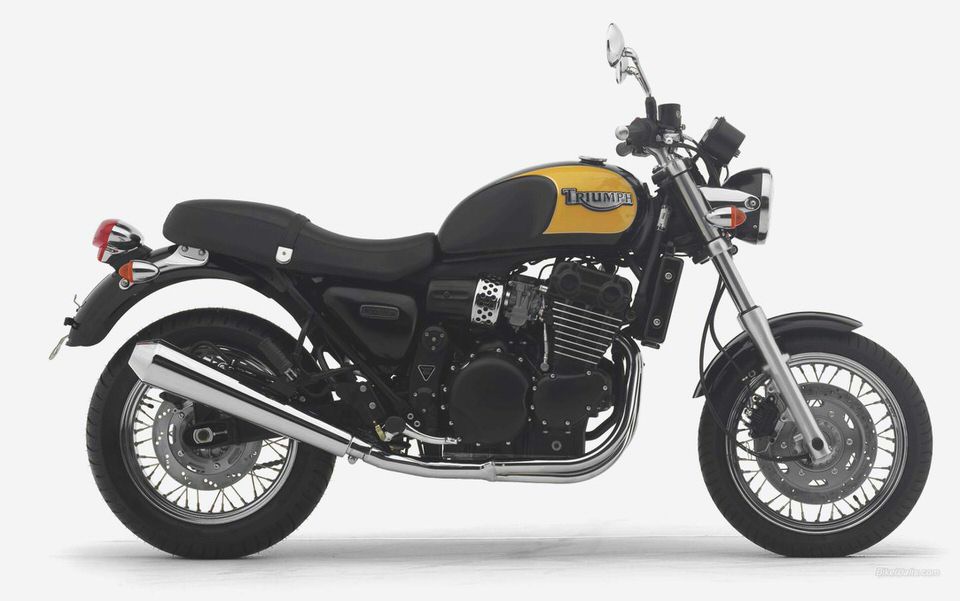
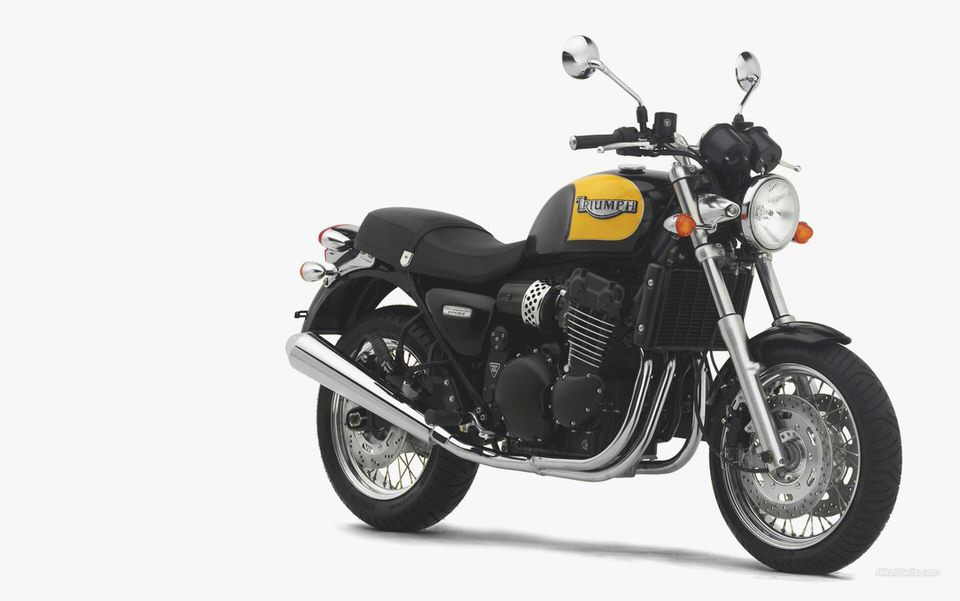
With its 3.96-gallon tank, the tasty Trumpet isn’t exactly a touring bike, but one can expect to go 120 miles before filling up.
All of our testers found the Thunderbird to be an adept handler even in some of the most treacherous corners, and despite a hint of chassis flex when pushed hard, many were surprised by the T-Birds blade-like abilities to tear up the turns.
You could throw it into corners pretty deep and it would be just fine, commented MCUSA Software Engineer Joe Wallace. The only problem I found was a lack of power to bring it out of the corner when you were really pushing it. But for the most part it was solid, save for some flex on high-speed sweepers.
The T-Bird’s suspension is surprisingly responsive up front with the 43mm forks providing ample feedback and the ability to track well through tighter corners. The rear monoshock is adjustable for preload, allowing adjustments to be made to accommodate a passenger. As a unit, the suspension soaks up bumps and dips with ease.
The dual 310mm front brakes perform admirably in most situations, although one of our testers experienced a bit of fade as the ride progressed down a long, twisty downhill stretch. A large 285mm disc in the rear helps the cause.
There was definitely some brake fade towards the end of the ride, said Brian Chamberlain, a former racer and MUCSA’s VP of Visual Design. But I just reduced the lever distance with the quick-adjust dial and it was fine until the brakes cooled off.
Few will likely push the Thunderbird as hard as our testers do, so there’s little question it possesses the ability to perform under most circumstances. The T-Bird, with its mild manners yet capable performance, is an excellent bike for those that are more interested in the hum of the engine than the number of ponies it’s pushing at the rear wheel.
The Thunderbird Sport has a fairly neutral riding position that suits its character. The Trumpet cuts a refreshingly simple profile that stops just short of full-retro.
So, what’s not to like on the Triumph offering? The seat is frustratingly difficult to remove and reattach, making access to the battery and guts a chore. Also, we were a bit disappointed to see paint beginning to chip away at the area surrounding the mouth of the gas tank, a surprise for a company that has a strong reputation for reliability and attention to detail. Finally, our test bike began oozing oil out of a vent tube.
We started investigating a possible crimped line or damaged seal, but we hear that sustained high-speed running with the oil level fully topped up can cause blow-by oil to accumulate in the airbox. We’ll update this situation when we get our Triumph dealer to check it out.
When it comes right down to it, the Thunderbird is a bit of a throwback. It’s purely a motorcycle, not some niche bike built to conquer a tiny segment of an increasingly segmented market. There are faster bikes available, and others that have more flamboyant style.
But the T-Bird has a satisfying blend of capabilities that make it appealing in its own special way.
The T-Bird will likely appeal to those looking for a machine that is a departure from the norm, yet still maintains reasonable performance capabilities. At $8,499, the Triumph is a moderately priced machine that injects a lot of soul and retro-cool into a sometimes bland standard class.
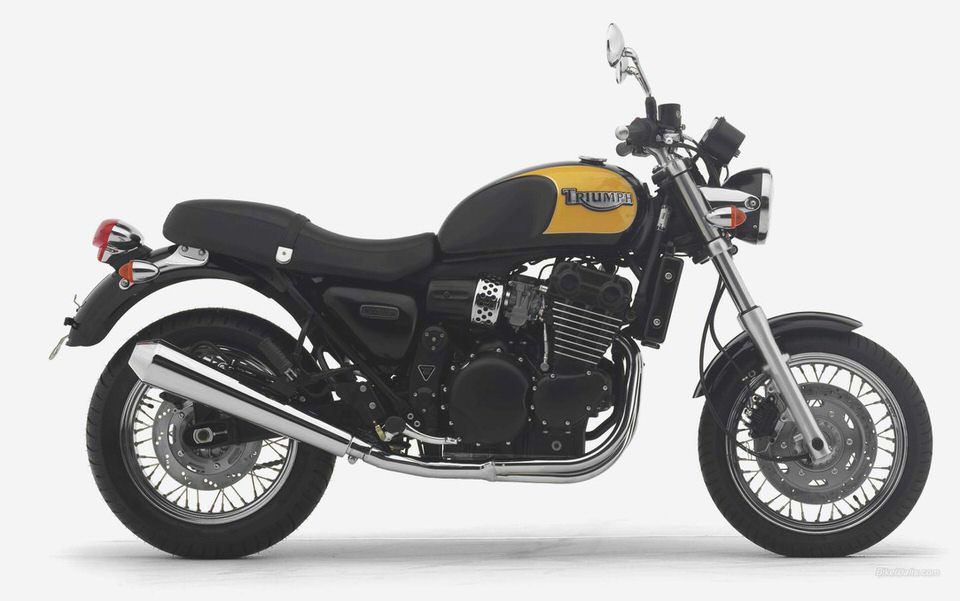
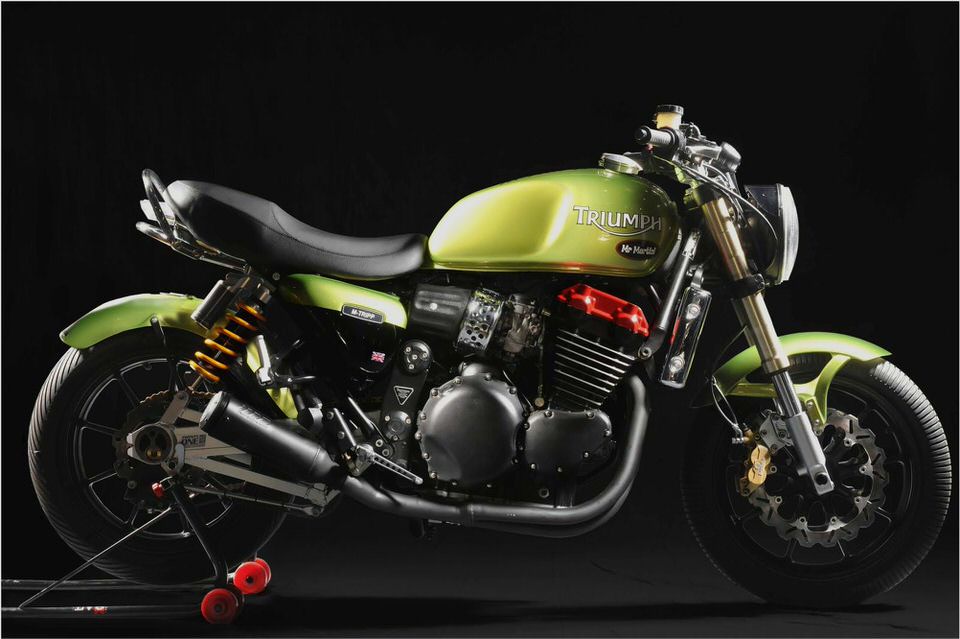
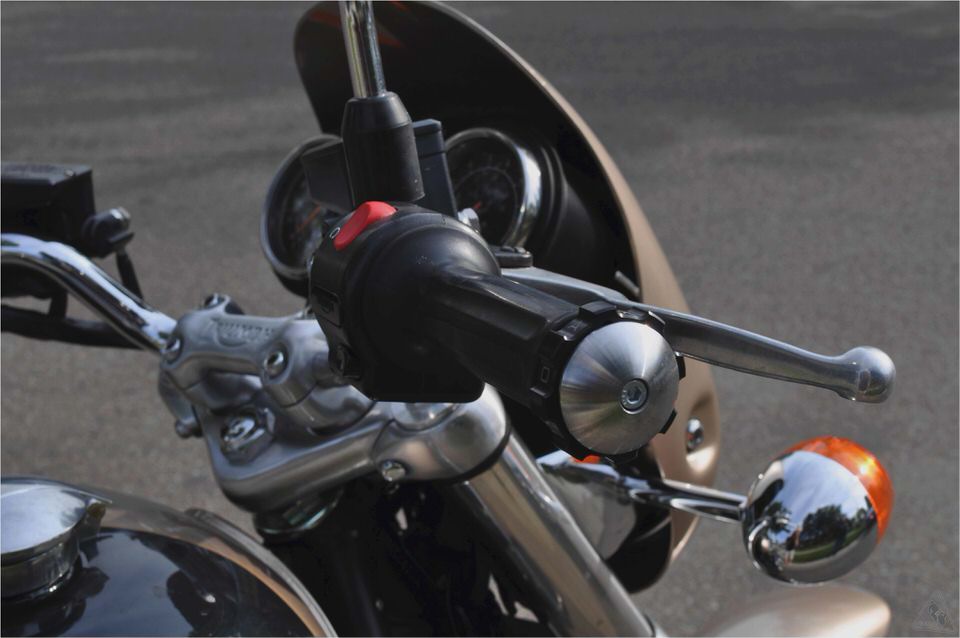
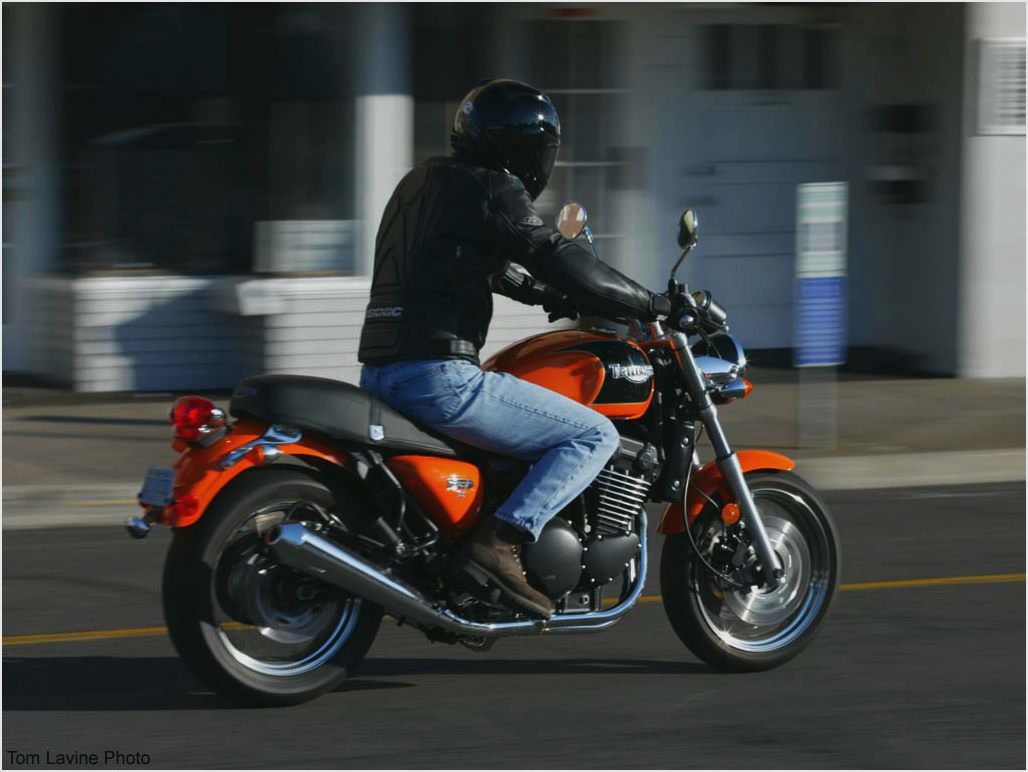
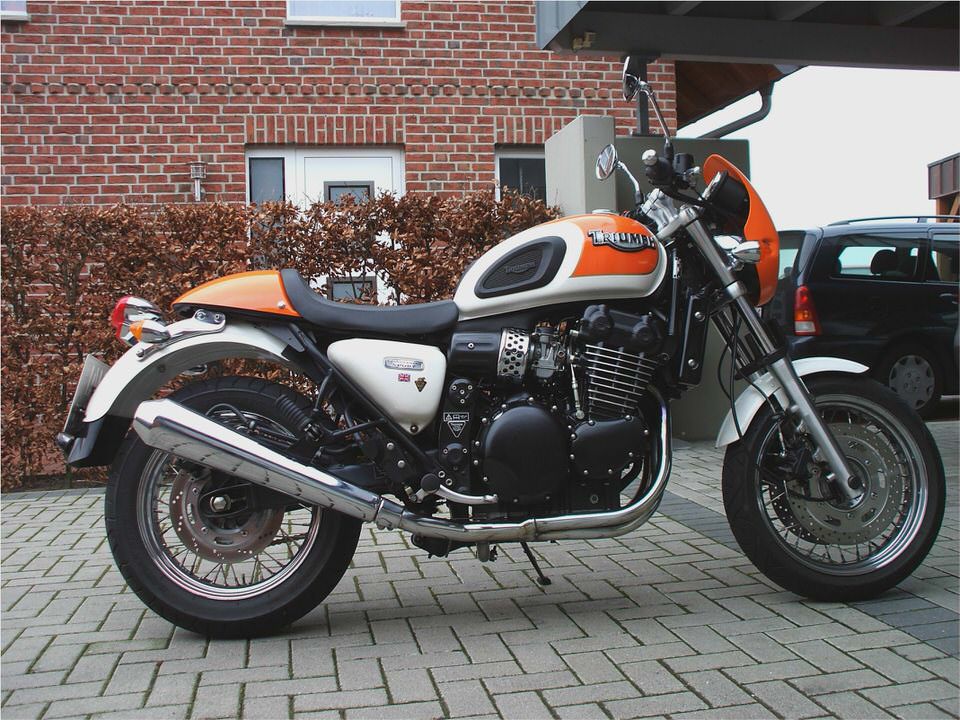


- 2013 Triumph Rocket III vs Ducati Diavel Strada – Motorcycle USA
- Triumph Thunderbird with Big Bore Kit – Test Drives – Triumph Touring…
- 2007 Triumph Sprint ST Bike Test – Motorcycle USA
- Triumph Daytona 600 Motorcycle Service Manual 2002-2006
- Triumph Tiger 800 – webBikeWorld

